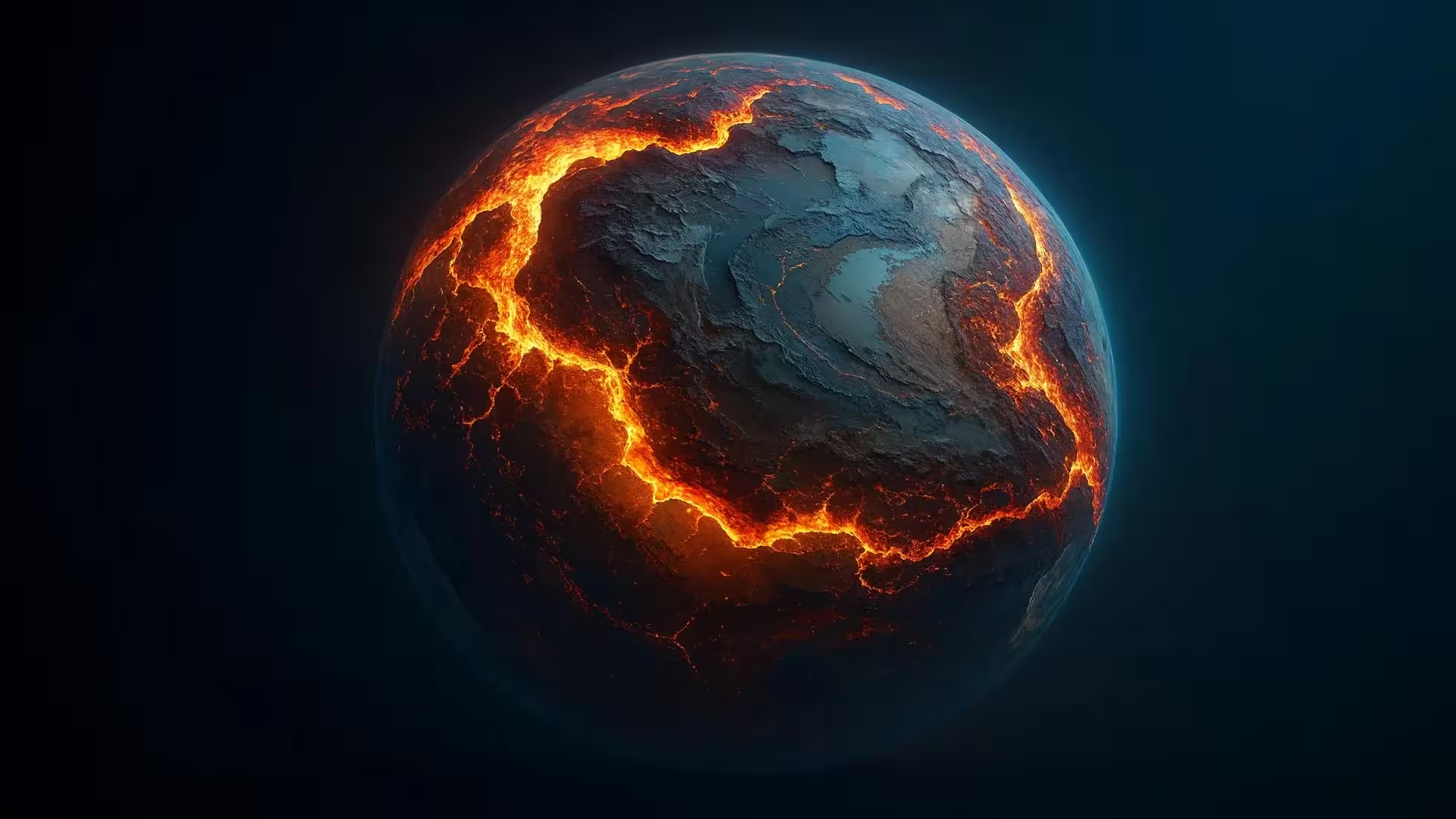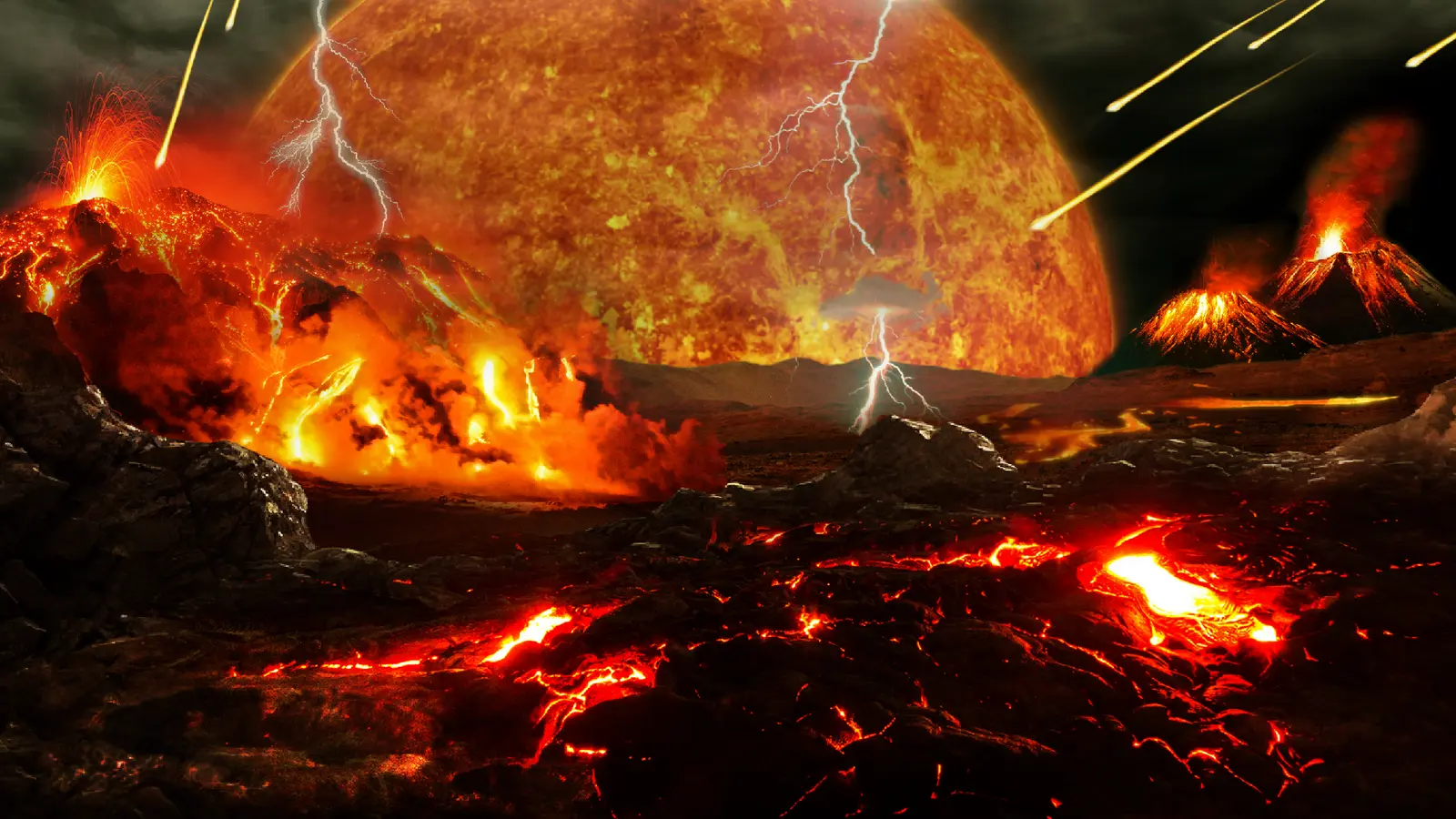8 Minutes
Deep within Earth's crust, temperatures exceeding 900°C rewired the planet’s chemistry and mechanics, producing the first stable continents. New research from Penn State and Columbia University links this ultra-high heat to the upward migration of radioactive elements — a process that both cooled the lower crust and concentrated the minerals modern technology now seeks.
A hidden furnace beneath our feet
For billions of years, Earth's continents have served as the stage for mountains, ecosystems and human civilizations. Yet scientists have long debated how continental crust became so durable over geologic time. A new study, published in Nature Geoscience and led by Andrew Smye of Penn State with co-author Peter Kelemen of Columbia University, points to a surprisingly simple but extreme answer: the lower crust had to get very hot — hotter than previously believed.
According to the researchers, temperatures in parts of the lower crust rose above 900°C. At those extremes, certain minerals melt or become mobile while tectonic forces reshape rock fabric. Crucially, heat-producing radioactive elements such as uranium, thorium and potassium began migrating upward during these ultra-high-temperature (UHT) episodes. As these elements moved toward shallower levels and decayed, they released heat nearer the surface, allowing the deep lower crust to cool, crystallize, and therefore strengthen. The result: continental roots that could resist erosion and the constant churning of plate tectonics.

"Stable continents are a prerequisite for habitability, but in order for them to gain that stability, they have to cool down," Smye said. "In order to cool down, they have to move all these elements that produce heat — uranium, thorium and potassium — towards the surface, because if these elements stay deep, they create heat and melt the crust."
Reading the rock record: how scientists tested the idea
To test the hypothesis, the team analyzed hundreds of metasedimentary and metaigneous rock samples from widely separated crustal sections, including the Alps and parts of the southwestern United States. These rocks preserve a record of peak pressures and temperatures they endured while mostly solid — a key signature of metamorphism. By grouping samples into high-temperature (HT) and ultrahigh-temperature (UHT) categories, the researchers could compare how elemental concentrations changed with metamorphic intensity.
The clearest pattern? Rocks that experienced temperatures above roughly 900°C consistently contained much lower concentrations of uranium and thorium than those that reached only 650–800°C. That depletion is consistent with upward redistribution of heat-producing elements during UHT events. In effect, the hottest episodes acted like a planetary distillation: the deep crust shed its radioactive 'fuel' upward, and in doing so it cooled and hardened.
To put the numbers in context, typical geothermal gradients — the rate temperature increases with depth — are about 20°C per kilometer. With stable continental roots typically 30–40 km thick, temperatures of 900°C at depth aren’t the norm. The authors point out that Earth’s interior was hotter in its early history and that the abundance of radioactive elements then was roughly double today’s values, making such UHT conditions more attainable during the critical interval about 3 billion years ago when modern continental crust began forming.
Why this matters: minerals, exploration and planetary habitability
The implications of ultra-high-temperature forging of continents reach beyond pure geology. When uranium, thorium and potassium are mobilized, the minerals that hosted them often break down and release other valuable elements — lithium, tin, tungsten and rare earth elements among them. Those are the same critical minerals now sought to build batteries, electronics and renewable-energy infrastructure.
"If you destabilize the minerals that host uranium, thorium and potassium, you're also releasing a lot of rare earth elements," Smye noted, suggesting that UHT episodes might leave behind geochemical fingerprints useful for modern mineral exploration. Regions that experienced deep heating and subsequent cooling may be prime targets for discovering concentrated deposits of critical metals.
Beyond resource mapping, the study offers a broader planetary perspective. Stable continents play a role in maintaining long-lived habitable environments by supporting stable landmasses, freshwater systems and atmospheric cycles. The UHT-driven redistribution of heat-producing elements may be a general mechanism on rocky planets: worlds that can achieve deep heating and then shed radioactive heat upward could forge long-lived crusts conducive to life. Planetary scientists hunting for habitable exoplanets might therefore look for indirect signs that similar internal dynamics occurred in a planet’s past.
Smye and colleagues emphasize that earlier models underestimated how hot parts of the lower crust needed to become. "We basically found a new recipe for how to make continents: they need to get much hotter than was previously thought, 200 degrees or so hotter," Smye said. He compared the process to forging steel — heat and deformation realign structure, purge weak phases, and produce toughness. Tectonic compression and mountain building at UHT conditions effectively 'forged' the continents in the same way.
What the data say: consistency across locations
One striking aspect of the study is the consistency of the signal across very different geological provinces. The researchers describe finding the same pattern — UHT rocks depleted in uranium and thorium — in samples from multiple continents. That repeated signal strengthens the argument that the upward migration of radioisotopes during extreme heating is a global mechanism, not a local curiosity.
Analytical methods included geochemical assays and metamorphic thermometry that estimate peak temperatures from mineral equilibria. Combining new laboratory analyses with decades of published data allowed the team to compile a broad dataset spanning different lithologies and tectonic histories. The breadth of evidence helped the authors move from a plausible mechanism to a robust geologic model for continental stabilization.
Expert Insight
"This research reframes how we think about the thermal and chemical evolution of Earth's crust," said Dr. Elena Ortiz, a planetary geologist (fictional) who studies comparative planetology. "If heat-driven mobilization of radioelements is a common pathway to building durable continental roots, it gives us a testable axis for comparing planets. On Earth it explains both crustal toughness and the concentration of critical minerals; on other worlds, it may mark the difference between short-lived lava plains and tectonically resilient continents."
Future prospects: exploration, modeling and planetary probes
Moving forward, the study opens several practical and scientific avenues. Mineral exploration companies can refine targeting strategies by looking for geological terranes with evidence of UHT metamorphism and subsequent enrichment of rare elements. Geodynamic modelers will incorporate higher-temperature thresholds into simulations of crust formation, mountain building and the coupled movement of heat-producing elements.
On the planetary front, missions that probe subsurface structure — whether via seismic networks on other planets or remote sensing of crustal composition — could search for signatures consistent with past deep heating and element migration. That kind of evidence would add a valuable dimension to habitability assessments for Mars-like bodies or rocky exoplanets.
The research, funded by the U.S. National Science Foundation and published in Nature Geoscience, therefore ties a technical metamorphic petrology insight to grand themes: how Earth became a stable, life-supporting planet and how chemical plumbing deep inside the planet created the resources and conditions we depend on today.
Source: sciencedaily
Comments
rockrift
if that's real then... is this even global? samples from Alps and SW US seem limited, could be local quirks or sampling bias, no?
petrolab
wow didn't expect the crust to hit 900°C... that's wild! if true, it ties together why rare metals cluster, cool and kinda scary, ngl


Leave a Comment